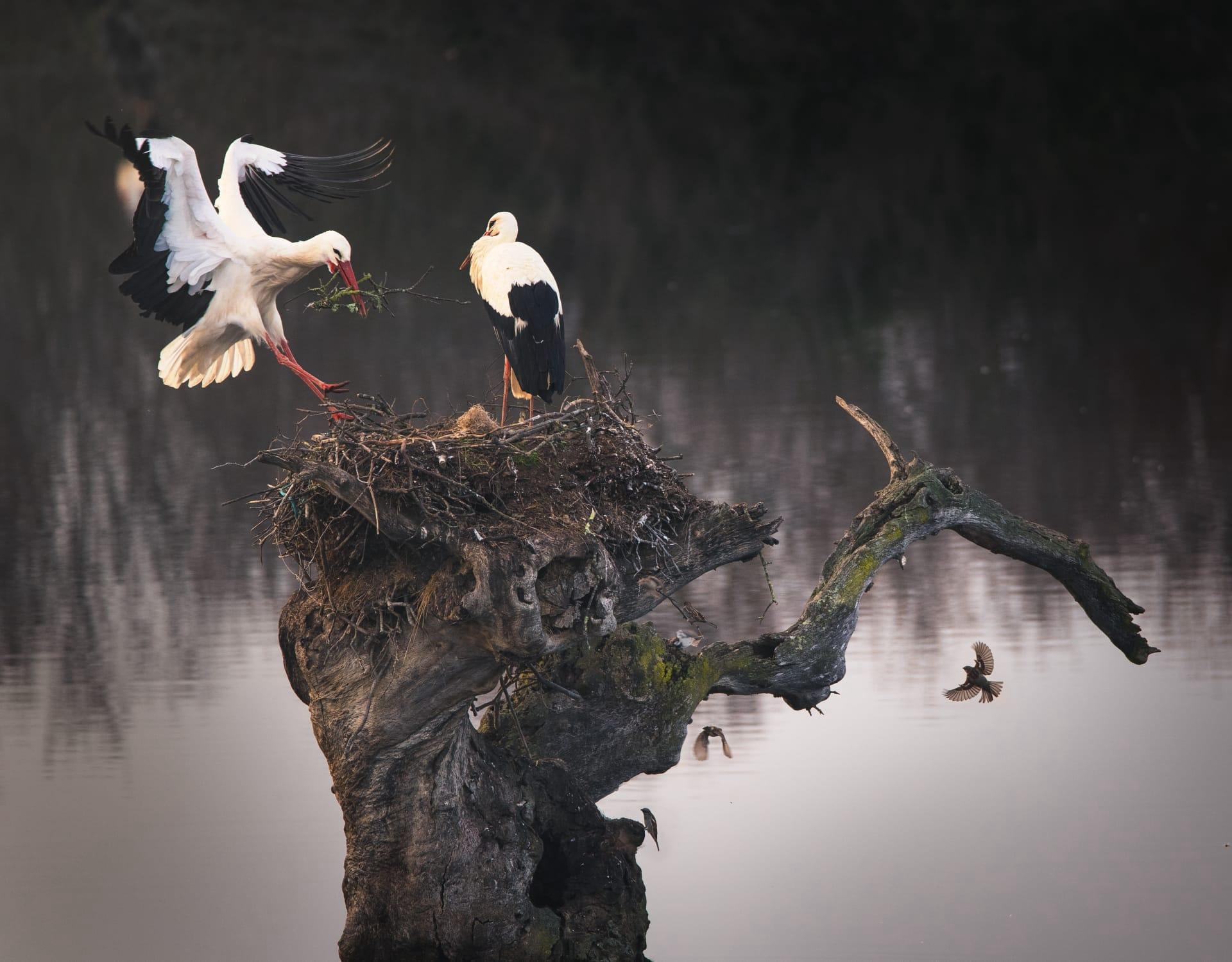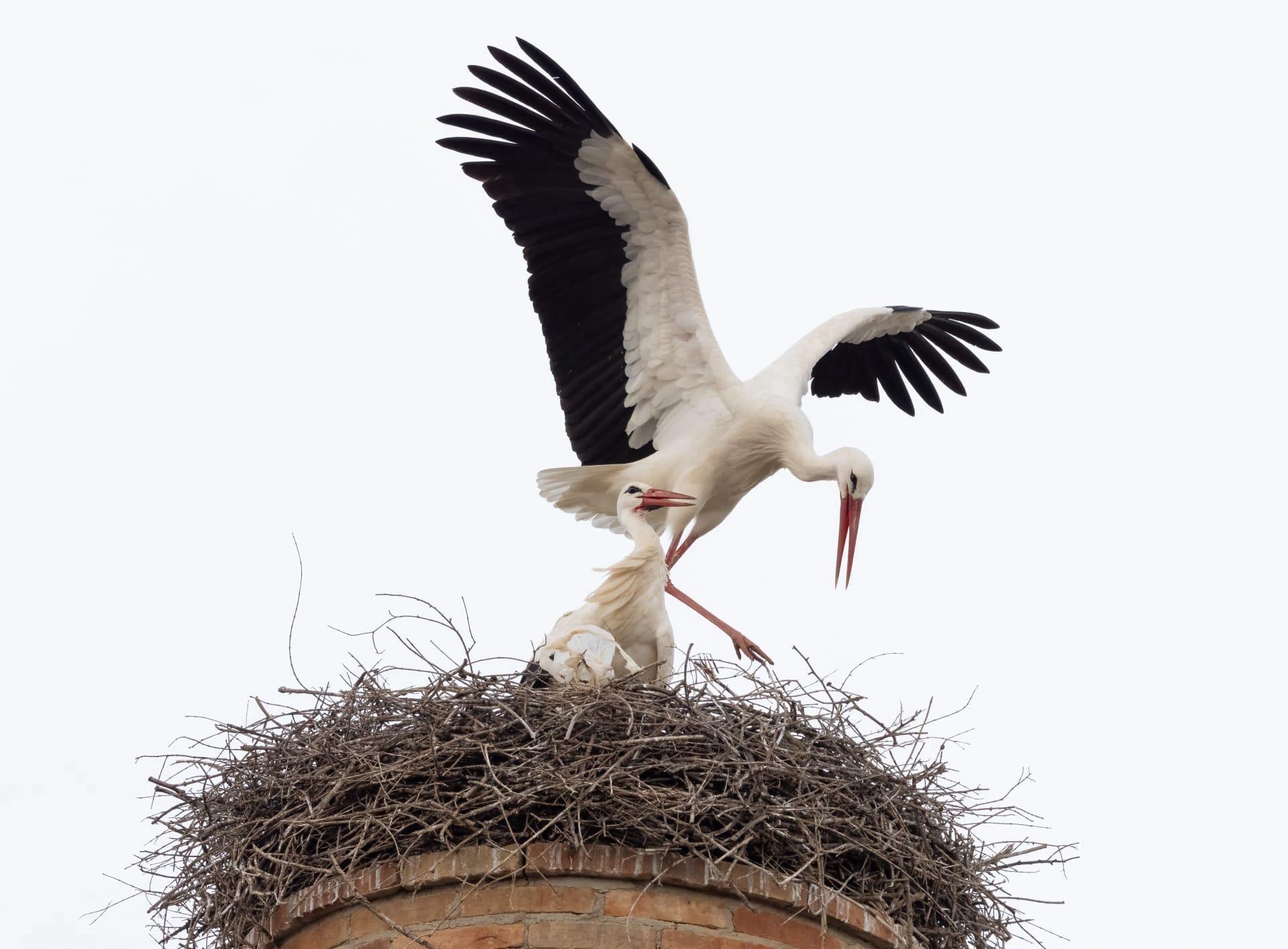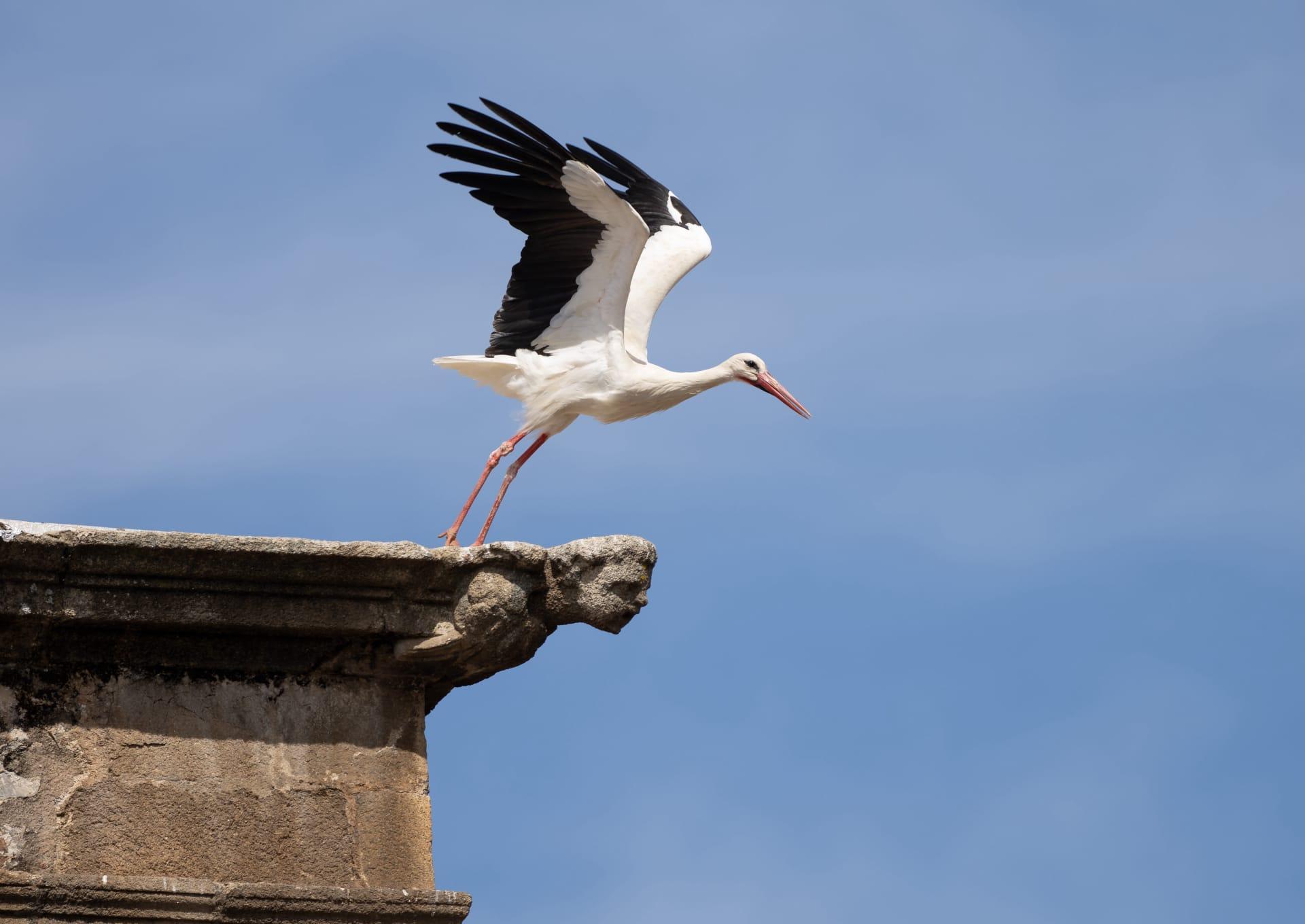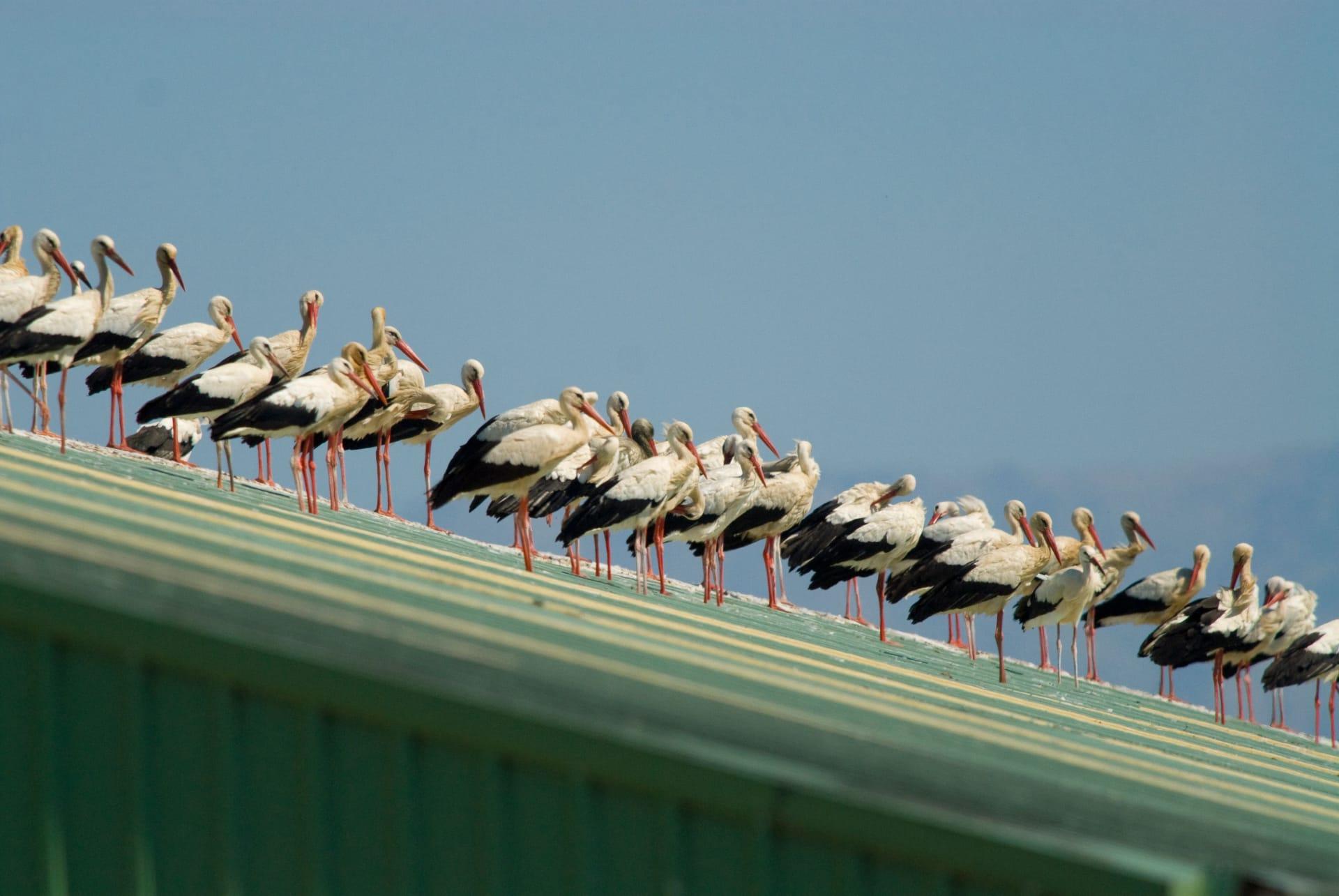Stork Trivia
- Home /
- Trivia Question /
- Animal /
- Stork Trivia
1
Question: What are the most distinguishing physical features of storks?
Answer: Storks are known for their long legs, necks, and beaks. These features aid them in wading through water in search of food. For instance, the average beak length of a European White Stork can be up to 8 inches (20 cm), while their legs can reach lengths of 12 inches (30 cm). This elegant stature helps them spot fish and frogs in shallow waters.
Question: How far can storks fly during migration?
Answer: Storks are phenomenal migrants. Some species, like the White Stork, travel thousands of miles during migration. They can cover up to 200 miles (320 km) a day. The incredible journey of these birds includes crossing vast areas like the Sahara Desert. They utilize thermal air currents to glide and conserve energy, soaring at altitudes of up to 16,000 feet (4,900 meters).

2
Question: Do storks really deliver babies?
Answer: The story of storks delivering babies is a myth originating from European folklore. This tale likely started due to storks nesting on rooftops, chimneys, and in areas close to humans, making them a familiar sight. In reality, storks are caring parents to their own chicks, which they feed and protect diligently.
Question: Is it true that all storks are migratory?
Answer: While many species of storks migrate, not all do. For instance, the Marabou Stork of Africa is mostly sedentary, meaning they do not migrate long distances. They might move locally in search of food, but these movements are limited compared to the extensive migrations of species like the White Stork.

3
Question: What do storks eat and how do they hunt?
Answer: Storks are carnivorous and have a diet mainly consisting of fish, frogs, insects, and small mammals. They hunt by wading in shallow water, using their long beaks to snap up prey. Some species, like the Saddle-billed Stork, are known to hunt in groups, coordinating their movements to catch fish more efficiently.
Question: How do storks communicate with each other?
Answer: Storks use a variety of vocalizations and body language to communicate. One unique behavior is 'bill-clattering', where they rapidly open and close their beaks to produce a clattering sound. This is often used as a greeting or a sign of aggression. Additionally, they use posture and movements, like wing flapping, to signal different intentions and emotions to each other.

4
Question: How long do storks live?
Answer: Storks can have quite a lengthy lifespan. In the wild, they can live for 20 to 30 years, but in captivity, some have been known to live up to 35 years. Factors like habitat, diet, and predation can influence their lifespan in the wild.
Question: What role do storks play in their ecosystem?
Answer: Storks play a crucial role in their ecosystems as controllers of pest populations. By feeding on insects and small rodents, they help maintain a balanced food chain. Moreover, their migratory patterns can aid in the dispersal of certain plant species, as they carry seeds over long distances.

5
Question: Are stork populations stable worldwide?
Answer: Stork populations vary widely. Some species, like the European White Stork, have stable or increasing populations due to conservation efforts. However, others, like the Black Stork, face threats from habitat loss and are classified as near threatened. It's essential to continue conservation efforts to ensure the survival of these diverse species.
Question: What are the nesting habits of storks?
Answer: Storks are known for building large nests, often in high places like trees, cliffs, and man-made structures. A typical stork nest can be up to 6 feet (1.8 meters) in diameter and 10 feet (3 meters) in depth. These nests are often reused and added to each year, becoming quite massive over time. Both parents take part in building the nest and caring for the eggs and chicks.